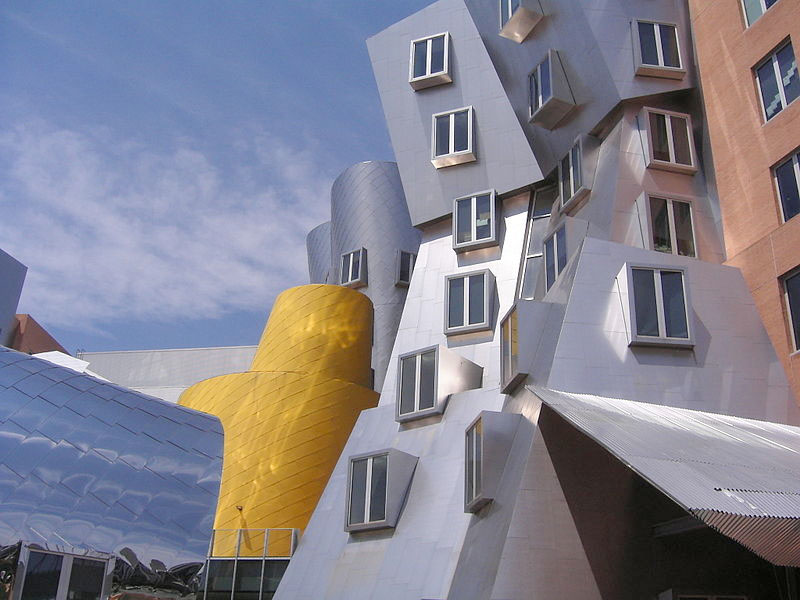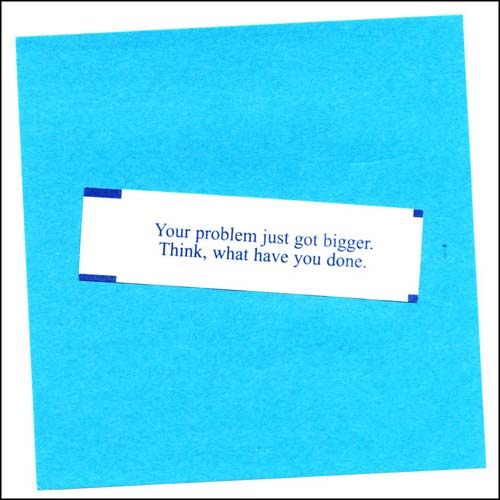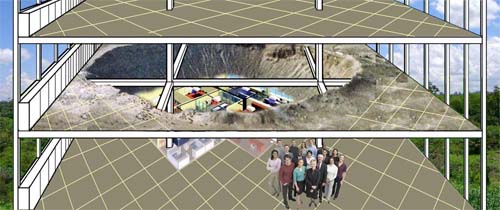I’ve just posted a longer (draft) version of Architecture’s Dysfunctional Couple: Design and Technology at the Crossroads, a paper that I wrote and abridged for the forthcoming International Journal of Design Education, Volume 7.
Category Archives: Writings
Summary and critique of latest LEED reference guide (v4)
I’ve just completed a summary and critique of the latest LEED reference guide (v4) for newly constructed “green” buildings. This is the third such critique that I’ve posted online: my first such attempt was back in 2007 for LEED version 2.2, and my second summary was posted in 2010 for LEED’s 2009 edition. I’ve also posted a table with links to the various LEED sections (“categories’) within the three critiques.
Here’s a sample of my critique from the v4 Introductory section:
U.S. buildings actually produce relatively little CO2, mainly by burning oil or gas for heating and hot water. The big generators of global warming gases are not buildings, but rather the coal-burning electric utilities. By including the CO2 emissions from electric power plants in the category of “buildings,” LEED essentially lets the electric utilities off the hook — their contribution to global warming is barely mentioned in the reference guide. The reason for this is clear: LEED has no interest in threatening the infrastructural basis of corporate profitability by challenging the cheap supply of energy. In fact, LEED is not interested in any form of regional, national, or global planning that might actually address the questions it raises. Rather, it’s ideology is consistent with that of the corporate entities it serves so well, providing as it does a branding tool to validate their “sustainable” and “green” efforts: according to LEED, one must tap into the corporate desire for profitability, and put into motion the miracle of “markets” to solve all problems, one building at a time. In spite of LEED’s claim that the nonresidential (i.e., corporate) “green building portion of the construction market” has achieved a 35% market share in 2010, the planet continues to lurch closer and closer to some sort of disastrous climate crisis, global poverty persists, and most workers still “lead lives of quiet desperation.” But as long as the LEED brand grows, these counter-indications won’t dampen the spirits of the pragmatists in the USGBC (the U.S. Green Building Council is the not-for-profit organization that created the LEED rating system) or call into question their vision of a voluntary, consensus-based, market-driven program.
Fortune…
When living in Hong Kong in 1997-1998, I discovered that Chinese fortune cookies do not exist in China, but rather are an American innovation. In my early days eating American Chinese food, I got used to the idea that the fortune cookies supplied with the check at the end of the meal actually did contain a fortune — that is, a prediction of what would happen to you sometime in the future.
These fortunes always had a positive, or optimistic, character, since it would clearly be counter-productive for a restaurant to deliberately give its customers bad news.
At some point, however, the fortunes in fortune cookies seemed to change their character; in fact, they were no longer fortunes at all, but merely trite pronouncements about life.
Not having an actual fortune in a fortune cookie was discouraging to me, since there are already enough trite pronouncements about life available through mass media and news programming; it seemed hardly necessary to work my way through the plastic packaging of the cookie, and crack open the hard shell of cookie material, in order to get yet another annoying message about love, life, and work.
Yet I continued to pry open these strange clams of brittle dough, perhaps hoping that an actual fortune would emerge — something I could ridicule freely and with pleasure. Imagine my surprise, then, when I recently opened a fortune cookie at Ling Ling Garden restaurant in Ithaca, NY, and received neither an optimistic message about my future nor a facile observation about life, but a shocking rebuke and warning: “Your problem just got bigger. Think, what have you done.”
I was literally stunned. Was there a rogue employee somewhere in the fortune cookie production line planting dystopic messages in these cookies? And if so, why? And was this message/warning unique, or were there others like it? My mind raced feverishly thinking of the possibilities: “The man behind you has a gun. Your life is in danger.” “Hundreds of large rats have entered your home. Extermination is impossible.” “Your computer just crashed, and none of your important work was backed up. You will lose your job.”
In the end, we paid the bill and left the restaurant. I haven’t dared return.
fashionable building
I recently found the type-written original copy of my first “scholarly” paper, written in 1983 and rejected for publication in the Journal of Architectural Education. I still think it explains quite a bit about architectural fashion, competition, and the peculiar type of architectural pedagogy that results. I’ve put the whole thing online here.
hole in floor
You’d think it would easy to put a hole in a floor of a building, but it isn’t. The building code (here I’m talking about the International Building Code, or IBC, latest 2009 version) is organized so that code enforcement people can check whether plans for buildings are in compliance with the code, rather than being organized so that architects can figure out what is or is not possible.
I made a calculator to help designers figure out whether their proposed holes, connecting two or more floors in a building, are in compliance with the 2009 IBC (similar to earlier versions). I also provide a more detailed discussion of the logic behind making such holes, with an invitation for those more expert than myself to clarify some puzzling code issues.
structural calculators
I’ve been working on some structural calculators lately, using some new software to convert Excel spreadsheets into HTML (web) applications. Examples include wood column design, wind and seismic load calculations, and steel beam design. I’ve always wanted to develop web-based calculators that would allow anyone with a browser to solve various structural problems; with this new software, I can develop the applications in Excel and have the JavaScript code created automatically, saving me the effort of learning to write such code myself. Some of you may be interested in checking out the software that does the conversion.
buckling
Two nights ago, I was lying in bed, thinking about how one might derive the critical buckling load of a column by considering such a column loaded instead like a beam (causing a similar deflected shape). The two equations governing the mid-span moment and deflection of such a beam are, of course, ingrained in my memory (M = wL2/8 and Δ = 5wL4/[384EI]), so it only took a moment to figure out the axial load that would reproduce such a state of equilibrium, simulating the condition of buckling. Since the deflection of a buckled column causes a moment equal to the applied load times the deflection, the critical buckling load must be approximately equal to the beam moment divided by the deflection, i.e., Pcr = wL2/8 divided by 5wL4/[384EI]) = 9.6EI / L2. This is remarkably close to Euler’s famous equation: Pcr = π2EI / L2. Anyway, if you want more details, see my short paper on the subject.
hawaii conference
I just returned from Hawai’i, where I presented a paper at the Hawai’i International Conference on Arts & Humanities. The abstract for the paper was originally targeted for another conference in Washington, D.C., but, having failed to make the cut there, I submitted the abstract to, and it was accepted at, this conference on Waikiki Beach: such are the vicissitudes of academic life. Having arrived in late evening, I took an early morning walk along the beach, waiting for the sun to rise.
First post: sustainability
Not your ordinary sustainability essays: see What Sustainability Sustains and some notes on the LEED 2.2 New Construction Reference Guide.





